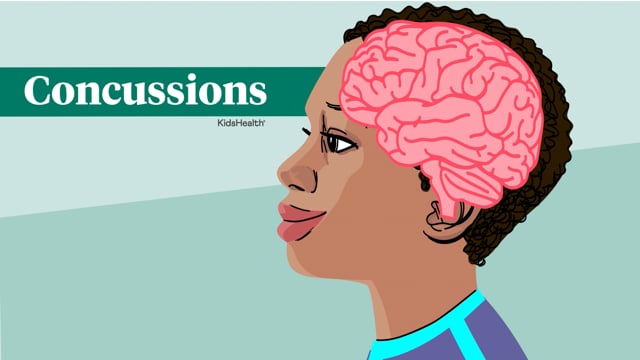Football Safety Tips
Is Football a Safe Sport?
Football is a great way to be part of a team and stay active, but it’s a contact sport and players can get hurt. Besides injuries to muscles, bones, and ligaments (tough bands of tissue), being hit in the head over and over during tackling affects the brain. These head injuries can cause serious brain problems later in life. Changes in training and rules may help lower the risk of harm to the brain.
Athletes and their families need to decide if the risks of football are worth it. Players should follow these tips to help prevent injuries.
Staying Safe & Preventing Injuries in Football
Football is a fast and physical game, so it’s important to take steps to stay safe. Sometimes you can avoid getting hurt by using the right protective football gear, knowing how to tackle in the correct way, and following safety rules. These tips can help.
Do I Need to Wear Safety Gear to Play Football?
Wearing the proper protective equipment for football can lower the risk of getting hurt. Players need:
Helmet
All football helmets should have a hard plastic outer shell and a thick layer of padding. Helmets should meet the safety standards from the National Operating Committee on Standards for Athletic Equipment (NOCSAE). Your coach or a salesperson at a sporting goods store can make sure you get a helmet that meets these standards and fits well.
Helmets also should have a rigid face mask that’s secured to the helmet. Face masks differ depending on the position and purpose, so ask your coach which kind is best for you.
All helmets must have a chin strap with a protective chin cup too. The chin strap needs to be fastened and snug during play.
Padding
Football shoulder pads should have a hard plastic shell with thick padding. Players also should wear pads on their hips, thighs, knees, and tailbone (the bone at the bottom of the spine). Some football pants include pads that snap into place or fit into pockets within the pants. Other pants are shells that are pulled over the pads.
Shoes
Different leagues have different rules about the kind of shoes and cleats (spikes on shoe soles that help grip the ground) players can use. Some cleats are detachable, and others are molded so they can’t be taken off. Check with your coach and your league’s guidelines to see which types of shoes are allowed.
Mouth Guard
All football leagues require players to use a mouth guard. Get one with a keeper strap that attaches it securely to the face mask.
Other Gear
An athletic supporter with a cup can help prevent injuries to the testicles. A sports bra can provide comfort and support. Other helpful items include padded neck rolls, forearm pads, and padded or nonpadded gloves. There are also “flak jackets” that protect the ribcage and belly. If you need to wear glasses on the field, make sure they’re shatterproof sports glasses or goggles that are designed to fit under a helmet.
How Can I Stay Safe at Practice and Games?
From warming up to knowing when to stop playing, these habits can help keep you safe.
Getting Ready to Play
Before starting the season, get a sports physical. Your doctor can check for any health problems and talk with you about sports safety. Most schools won't let athletes play unless they've had a sports physical within the past year. Plus, being in good shape can help you avoid injuries.
It’s also important to warm up and stretch before playing. Learn the rules of the game and use proper techniques — like how to safely tackle, absorb a tackle, and fall to the ground.
Playing different sports throughout the year can help prevent repetitive stress injuries (overuse injuries), which happen when someone trains too much or repeats the same motions.
Staying Safe on the Field
If you feel pain or get hurt, stop playing. You’ll need to get checked by an athletic trainer, coach, doctor, or nurse before going back on the field. When outside, protect your skin by wearing sunscreen with an SPF of 30 or higher and a hat (during noncontact activities, like warm-ups). Staying hydrated is also important — especially on hot, sunny days — so drink plenty of fluids before, during, and after practices and games.
Be sure to learn the signs of a concussion, like a headache, dizziness, or confusion. If you hit your head or don’t feel well:
- Tell the trainer or coach right away.
- Sit out until you’ve been cleared to return by a medical professional and follow the league’s concussion guidelines.
- Avoid asking your coach to put you back in or be pressured to go back in before you’re ready. The guidelines are there to keep players safe and healthy.
Know the team’s emergency plan for injuries as well. This includes calling 911 or the local emergency number for a head, neck, or back injury. It also means not moving the hurt player.

Concussions
Safety in Other Sports
Safety matters whether you’re playing football or doing another athletic activity. To help prevent injuries in other sports, check out these articles:
Reviewed by: Larissa Hirsch, MD
Date Reviewed: Jul 9, 2025
















